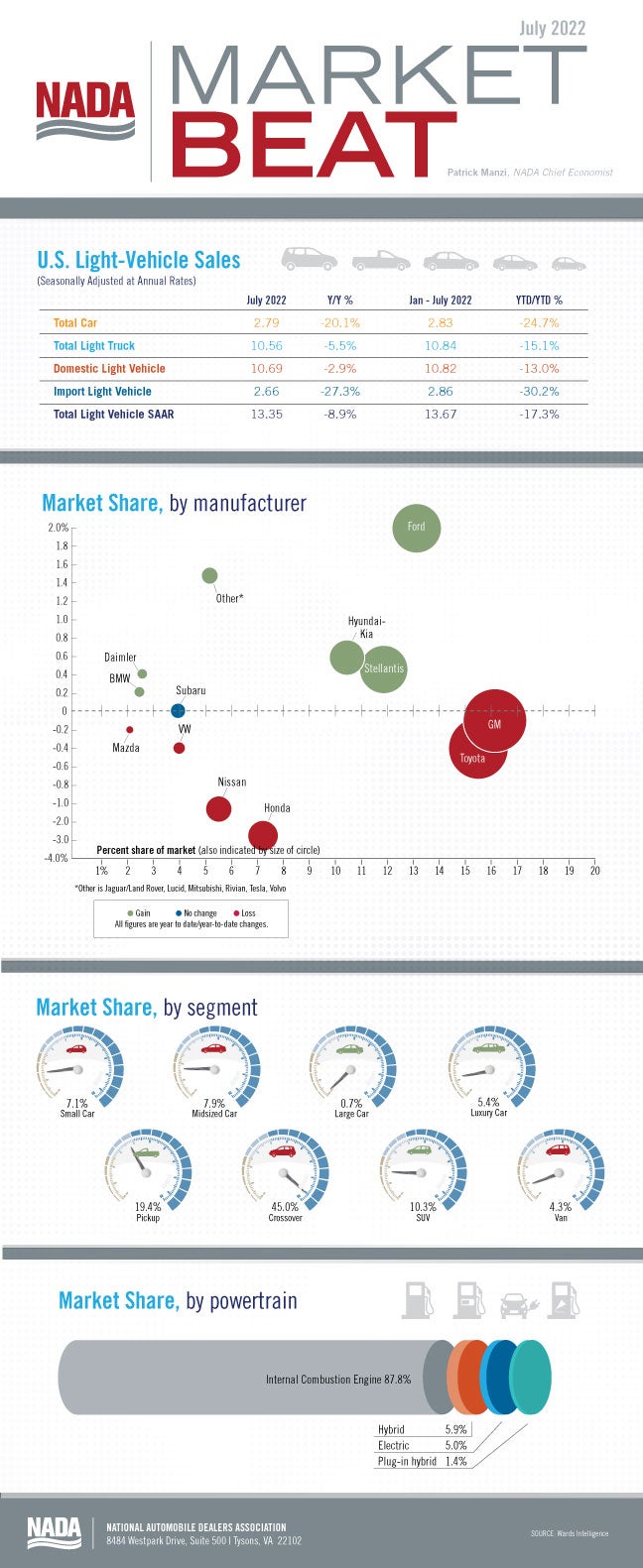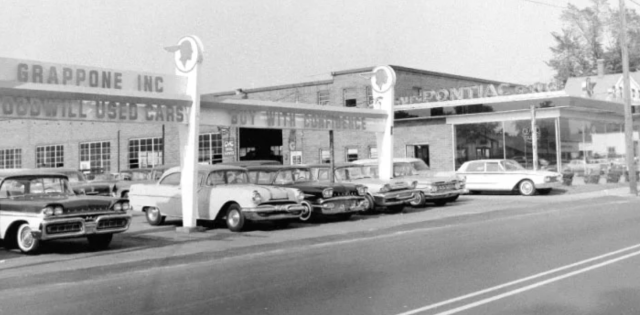New light-vehicle sales for July 2022 totaled a SAAR of 13.4 million units, up 2.5% from June and down 8.9% from July 2021, when sales first started to be constrained by the microchip shortage. As has been the case all year, sales continue to be limited by lack of new-vehicle inventory. At the start of July, new-vehicle inventory on the ground and in transit was 1.2 million units, and we don’t expect much change in that overall level by the end of the month.
Sales of battery electric vehicles (BEVs) reached 5% of all new light-vehicle sales through July 2022—the highest market share for BEVs to date. Sales of BEVs by franchised dealerships have accounted for 34% of all BEV sales this year. We expect that the share of BEVs sold by franchised dealers will continue to grow in coming years as more models are introduced.
Another industry first also occurred in July—the average monthly payment for a new vehicle reached an all-time high, topping $700. According to J.D. Power, the average monthly payment for a new vehicle is on track to be $708—an increase of $81 dollars compared with July 2021 and resulting in part from higher new-vehicle transaction prices, rising interest rates and lower discounts. July 2022’s average transaction price, says J.D. Power, is expected to reach $45,869, just shy of the all-time record set last month. Meanwhile, OEM average incentive spending per unit in July should total just $894, down 54.7% year over year and the third straight month below $1,000. Those transaction prices likely sting a little less for consumers with a trade-in, as demand for used vehicles remains high because of the tight supply of new vehicles. In July 2022, according to J.D. Power, average trade-in equity remains a near-record-high $10,083, up 37.4% from July 2021.
For the rest of the year, new light-vehicle sales will continue to be constrained by lack of inventory, and that likely won’t change much before year-end. Additionally, the Fed has increased the federal funds rate to a range of 2.25% - 2.5%, pushing borrowing costs for new and used vehicles higher. We think that the Fed will increase interest rates further at its three remaining meetings this year. This will continue to put upward pressure on monthly payments for new- and used-vehicle buyers, but we don’t believe it will materially impact new-vehicle demand. We forecast that new-vehicle sales for all of 2022 will total 14.2 million units.
For more stories like this, bookmark www.NADAheadlines.org as a favorite in the browser of your choice and subscribe to our newsletter here:











